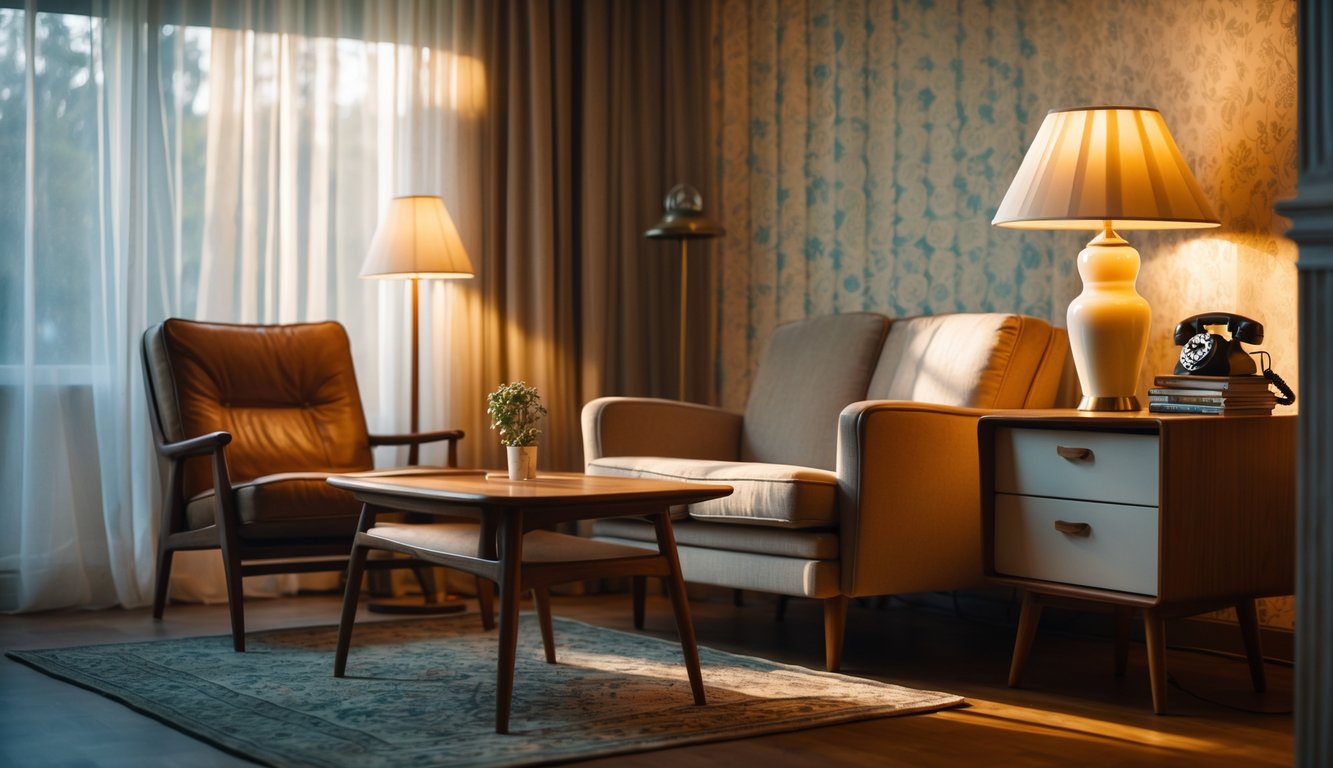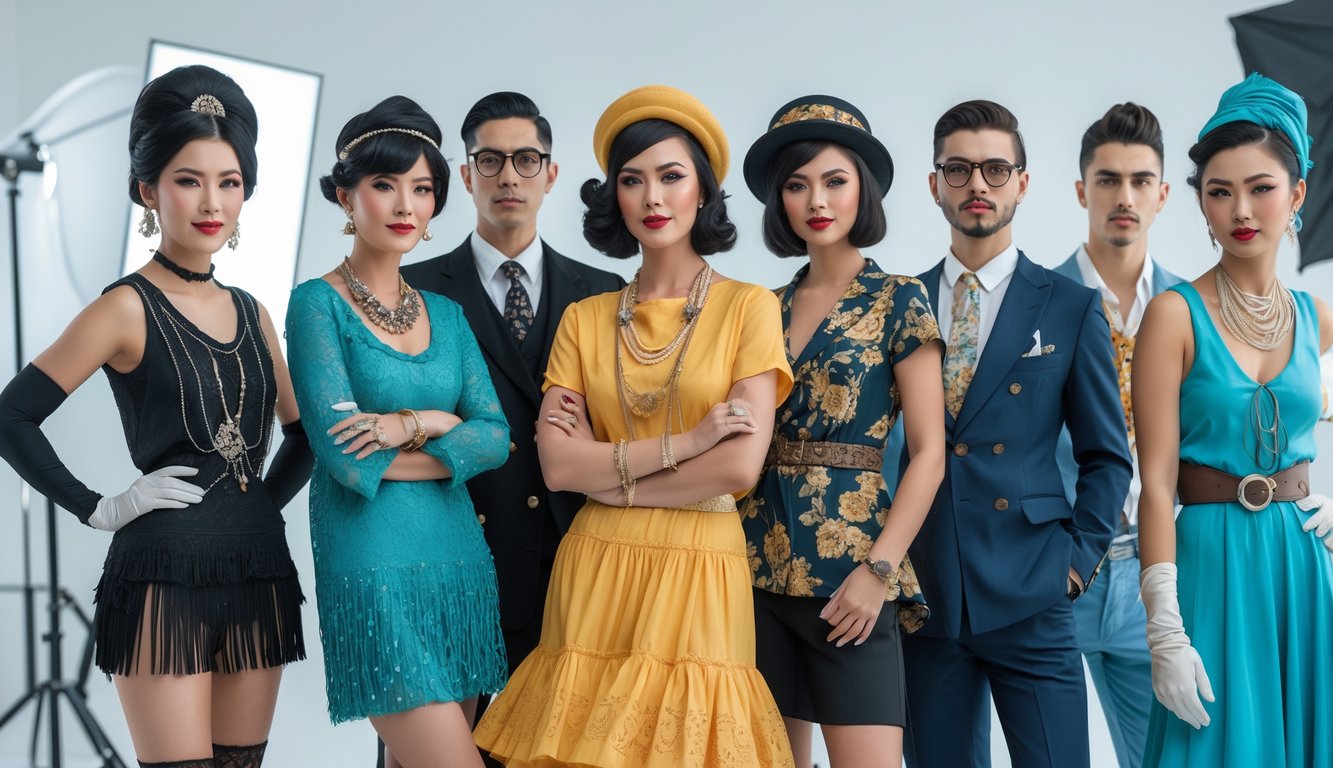
Icons and Influencers: Key Figures in Vintage Fashion

Honestly, I doubt most people even remember the moments that shaped these trends. But the designers, the places, the wild runways—they’re why my closet is a disaster. Forget neat trend cycles. It’s always some unpredictable genius or brand getting name-dropped by stylists, journalists, or those RealReal obsessives. Nothing about this is ever clean.
John Galliano’s Impact
One day it’s 80s blazers, next day it’s all about Galliano again. Everyone’s whispering about that legendary Spring 1994 show—bias-cut slips, velvet trims, pirate-wear meets WWII references. Who else could get away with that? (Nobody.)
Galliano didn’t just change resale value—he made “vintage” mean collectible, not just old. Stylists still raid those archives for ideas. Judith Clark, fashion historian, once said, “Galliano’s silhouettes fundamentally rewrote the vintage script entirely.” That’s a big claim, but she’s not wrong.
Designers in Paris now sew hidden corsetry into vintage-inspired stuff. It’s less about nostalgia, more about engineering a fantasy, like turning up late to a party on purpose. I don’t know, it’s kind of genius.
Phoebe Philo’s Timeless Vision
Can’t pretend I don’t remember when Philo made everyone ditch loud prints for minimalist everything. Her Céline collections? People fought for those coats. I watched friends swap out fussy vintage for one perfect Philo piece.
And now? Phoebe Philo stuff sells for double what it did new. She told Vogue, “I want women to feel strong and secure,” and then she just did it—clean lines, neutral colors, no nonsense. I’ve seen a vintage Céline coat vanish from consignment in minutes.
Minimalism’s dead? TikTok says so every week. Then someone unearths a 2013 Céline bag and the cycle restarts. No logic here.
The balenciaga Era and Maison Margiela’s Role
Trying to define “Balenciaga era” is chaos. Demna’s weird giant shoulders, logo hoodies—nobody thought they’d count as vintage, but here we are. I watched a buyer get outbid on used Triple S sneakers for nearly retail, so what do I know?
Maison Margiela basically invented the whole deconstructed, reconstructed thing. Every time you see upcycled military, weird tailoring, or those split-toe Tabi boots, it’s Margiela’s fault. Friends always ask if Margiela’s “Replica” line is real vintage. I don’t know—maybe? Probably not. Does it matter?
If you see split-toe boots under $300, buy them. They’re probably Margiela for H&M, but whatever—the archive nerds will beat you to it anyway. Balenciaga, Margiela—they never just fade away.
Nostalgia and the Draw of Past Decades
Every time a brand drops a “new” collection, half the crowd’s like, didn’t we see this in the ‘80s? Or was it the ‘40s? The obsession’s not subtle—mid-century lamps sell out, velvet capes with shoulder pads show up on celebrities, and everyone acts surprised.
1940s Silhouettes and Hollywood Glamour
Sequined gowns, bias-cut dresses, padded blazers, nipped waists—my grandma’s closet had more “Hollywood glamour” than any red carpet. That dramatic structure from the 1940s never really leaves. But, honestly, most of those fabrics fall apart after one night out.
Designers keep reusing those tailoring tricks—details nobody needs but everyone wants. Stylists bicker about peplum seams or broad shoulders, while resale sites jack up ‘40s evening wear by 80% because nostalgia is stubborn. A historian on a Vogue panel said, “Old Hollywood allure is evergreen until people forget what ‘allure’ feels like.” Which is hilarious, and honestly, none of these influencers would survive a real antique zipper.
Reviving Art Deco and Mid-Century Modern
Okay, so apparently it’s impossible to escape geometric shapes—seriously, they’re everywhere again. Chandelier with weird angles? Check. Cocktail rings that look like they belong in a museum? Yup. Those little boxy handbags with chrome bits? Can’t move two feet without tripping over one. Art Deco, with all its sharp lines and gold bits that serve no real purpose, just keeps showing up. People act like it’s some new thing, but, come on, it’s been cycling through every few years. I read somewhere—was it Vogue?—that there’s been a 27% jump in “mid-century modern” tagged home stuff on resale sites. So, yeah, it’s not just your imagination.
But here’s what nobody admits: it’s not about comfort. It’s a flex. Some people will drop insane money just to say their dresser is “period-accurate,” even if it’s the most impractical thing ever. I mean, I know someone who refuses to drink espresso from anything but a chipped vintage cup. Makes zero sense. Starburst mirrors? Great, if you actually enjoy dusting. If you’re buying this stuff, please check the hardware. I swear, half the “mid-century” pieces out there have modern handles slapped on, and it’s painfully obvious. Every. Single. Time.
Red Carpet Moments: Vintage on Display
I spaced out for a minute and almost missed how the line between “collectible” and “just some old dress” has completely melted on the red carpet. Stylists text me in a panic about Lacroix sleeves making some kind of comeback—meanwhile, those random slip dresses with no label are suddenly the most interesting thing about someone’s look. Seams matter, archives matter, and I don’t care how many times you see a fake Chanel tag—still not real.
Trophy Vintage and Unmarked Finds
How many times have I watched a celeb walk in “trophy vintage”? Too many. Galliano-era Dior, archival Versace, you name it. The look gets tagged, reposted, and dissected instantly. It’s like, if you don’t have a brand and a year attached, did you even show up? Part of it is resale value, but mostly it’s for bragging. Zendaya does these deep dives into archives and suddenly it’s a game of “spot the reference” every awards show. Nobody’s talking about the slip dress with no label, though.
But sometimes, out of nowhere, someone just rocks up in a perfectly tailored dress with zero provenance—probably thrifted, maybe from Wasteland, who knows. Stylists will spend weeks on archives and still end up with a mystery piece, then panic when Instagram demands answers. Not every floral from the ‘90s is Anna Sui, but try telling the internet that. The mystery is half the fun, honestly. Eventually, those untraceable pieces become the real trophies. Until the authenticity police show up, anyway.